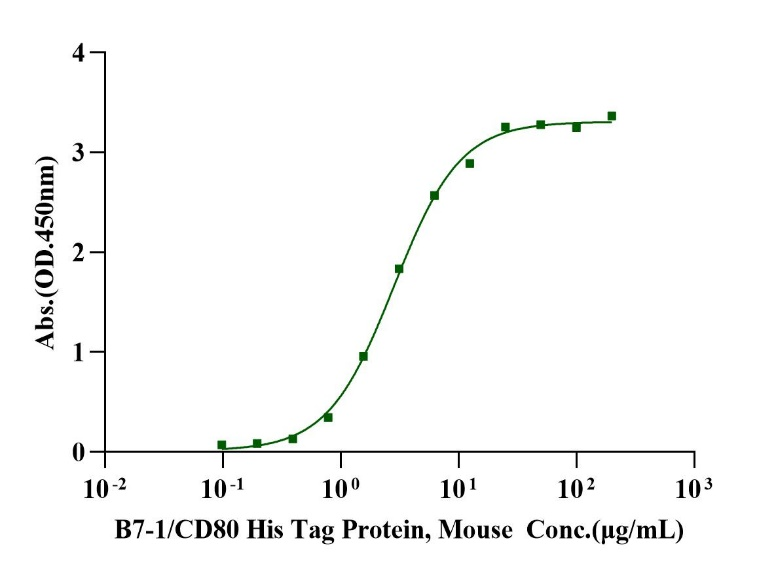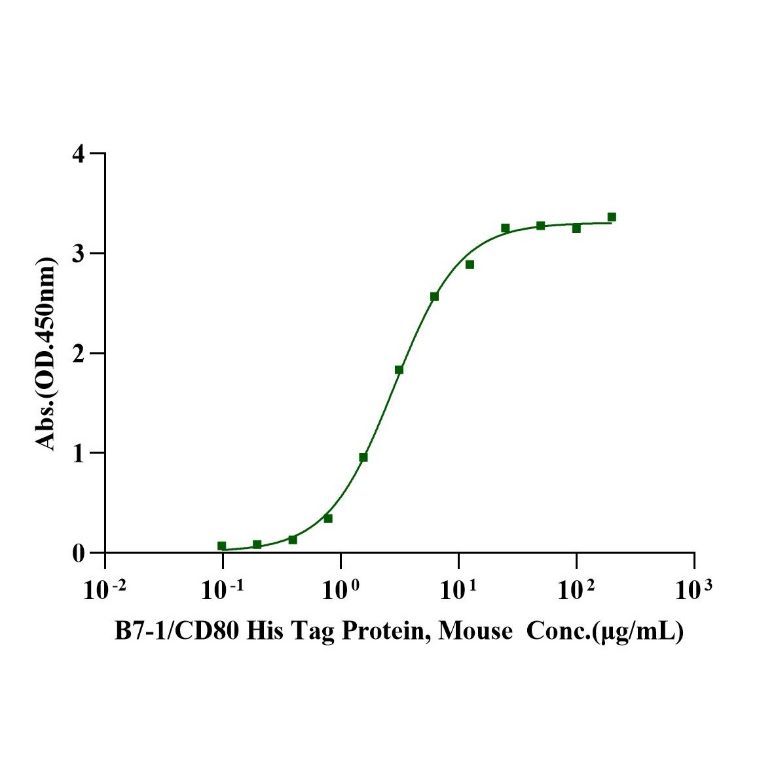1μg (R: reducing condition, N: non-reducing condition).
Product Details
Product Details
Product Specification
| Species | Mouse |
| Synonyms | Celiac Disease 3,Ligand And Transmembrane Spliced Cytotoxic T Lymphocyte Associated Antigen 4,Cytotoxic T-Lymphocyte Protein 4,CD152,Cytotoxic T-lymphocyte-associated antigen 4,CTLA4,CTLA-4,Cytotoxic T-Lymphocyte Associated Protein 4,Insulin-Dependent Diabetes Mellitus 12,Cytotoxic T Lymphocyte Associated Antigen 4 Short Spliced Form,Cytotoxic T-Lymphocyte-Associated Serine Esterase-4,CD152 Isoform,CD152 Antigen,CELIAC3,IDDM12,ALPS5,GRD4,GSE,CD,CTLA-4 Antigen |
| Accession | P09793 |
| Amino Acid Sequence | Glu36-Asp161, with C-terminal Fc |
| Expression System | HEK293 |
| Molecular Weight | 45-55kDa (Reducing) |
| Purity | >95% by SDS-PAGE |
| Endotoxin | <0.1EU/μg |
| Conjugation | Unconjugated |
| Tag | Human Fc Tag |
| Physical Appearance | Lyophilized Powder |
| Storage Buffer | PBS, pH7.4. |
| Reconstitution | Reconstitute at 0.1-1 mg/ml according to the size in ultrapure water after rapid centrifugation. |
| Stability & Storage | · 12 months from date of receipt, lyophilized powder stored at -20 to -80℃. · 3 months, -20 to -80℃ under sterile conditions after reconstitution. · 1 week, 2 to 8℃ under sterile conditions after reconstitution. · Please avoid repeated freeze-thaw cycles. |
| Reference | 1.Shuang Qin, Linping Xu, Ming Yi, Shengnan Yu,Kongming Wu & Suxia Luo: Novel immune checkpoint targets: moving beyondPD-1 and CTLA-4: MolecularCancer volume 18, Article number: 155 (2019). |
Background
Cytotoxic T-lymphocyte-associated protein 4 (CTLA-4) is an inhibitory receptor belonging to the CD28 immunoglobulin subfamily, expressed primarily by T-cells. The family includes CD28, CTLA-4 and ICOS as well as other proteins including PD-1, BTLA and TIGIT.Its ligands, CD80 and CD86, are typically found on the surface of antigen-presenting cells and can either bind CD28 or CTLA-4, resulting in a costimulatory or a co-inhibitory response, respectively. Because of its dampening effect, CTLA-4 is a crucial regulator of T-cell homeostasis and self-tolerance. The mechanisms by which CTLA-4 exerts its inhibitory function can be categorized as either cell-intrinsic (affects the CTLA-4 expressing T-cell) or cell-extrinsic (affects secondary cells). CTLA-4 mainly acts in a cell-extrinsic manner via its competition with CD28, CTLA-4-mediated trans-endocytosis of CD80 and CD86, and its direct tolerogenic effects on the interacting cell.
Picture
Picture
SDS-PAGE
ELISA

Immobilized CTLA-4/CD152 Fc Chimera, Mouse (Cat. No. UA010773) at 10.0μg/mL (100μL/well) can bind B7-1/CD80 His Tag Protein, Mouse (Cat. No. UA011082) with EC50 of 2.56-3.13μg/mL.


